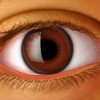Inhibiting microRNAs may help prevent degenerative eye disorders
Blocking two tiny molecules of RNA – a chemical cousin of DNA – appears to suppress the abnormal growth of blood vessels that occurs in degenerative eye disorders, UT Southwestern Medical Center researchers have found.
Their findings, available in the Proceedings of the National Academy of Sciences, suggest a potential strategy to treat age-related macular degeneration (AMD), a vascular eye disorder that affects nearly 2 million Americans and is a leading cause of blindness among older people.
“MicroRNAs can affect multiple pathways involved in age-related macular degeneration,” said Dr. Shusheng Wang, assistant professor of ophthalmology and pharmacology and co-senior author of the study. “Therapeutic manipulation of microRNAs 23 and 27 may give us a way to treat choroidal neovascularization in patients with degenerative retinal diseases.”
In the study, researchers found that silencing the microRNA cluster members miR-23 and miR-27 hindered the excessive formation of blood vessels in the back of the eye, known as choroidal neovascularization. When these blood vessels hemorrhage and leak, it creates a sudden deterioration of central vision.
MicroRNAs are tiny pieces of genetic material that can target multiple components of signaling pathways. By interacting with other protein-making molecules in cells, they help fine-tune the expression of networks of genes and control cell function.
But microRNAs also can contribute to the excessive blood vessel formation that is responsible for vascular disorders, the current UT Southwestern study shows. That’s because they stimulate the growth of new blood vessels from pre-existing vessels, a process called angiogenesis, which is an important natural process in the body used for healing and reproduction.
The body usually controls angiogenesis through a precise balance of growth and inhibitory factors in healthy tissues, Dr. Wang said. When the process becomes imbalanced, however, increased angiogenesis can lead to a variety of debilitating conditions.
Previous treatments for degenerative eye disorders have focused on inhibiting vascular endothelial growth factor (VEGF), a secreted protein that stimulates blood vessel formation. VEGF has been known to be a contributing factor in vascular disease in the retina of the eye.
Anti-VEGF drugs, which are injected into the eyeball, have been used to give patients some improvement in vision. These drugs, however, have limited effectiveness in treating some forms of neovascular AMD, and also have potential side effects.
Dr. Wang said further research may show that other microRNAs might also be involved, and that targeting multiple pathways may provide benefits in the treatment of these diseases.
“We want to see if a combination of microRNAs and angiogenetic drugs have a synergetic effect on the progression of macular degeneration,” Dr. Wang said.
(Source: UT Southwestern Medical Center: Proceedings of the National Academy of Sciences)
More information
 | For more information on age-related macular degeneration, including the effect of smoking, exercise and nutrition on eyes, as well as some useful animations and tips to keep eyes healthy, see Macular Degeneration. |
Dates
Tags
Created by:

 Login
Login














